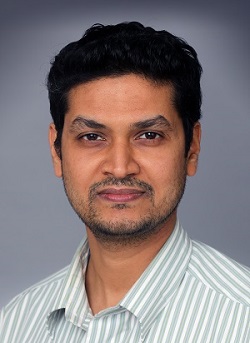Teaching Innovations at Vanderbilt: Ravindra Duddu and Cyberlearning Tools
By Faith Rovenolt, CFT undergraduate intern

I had the privilege to sit down with Dr. Ravindra Duddu, an Assistant Professor of Civil and Environmental Engineering who recently won an NSF CAREER grant that focuses on understanding Antarctic ice sheet fracture. To understand this phenomenon of iceberg calving, the grant proposes applying engineering tools and techniques to a fundamental earth science problem.
The grant also has a significant educational component, and the intersection of engineering and earth science lies at the heart of it as well. Duddu’s plan involves bringing engineering students and geology students together through cyberlearning framework tools to model and simulate earth science systems such as iceberg calving.
Based on past work by Dr. Aniruddha Gokhale with C3STEM, this simulation and modeling tool has the potential to bring dry, mechanical, or theoretical problems to life. It will also allow Duddu to transform a class from lecture-based to a student-driven, problem-solving learning experience. In future, this tool will be deployed in EES 3340 Structural Geology and Rock Mechanics course, wherein students will be shown the modeled system and how the variables work. Then, they will answer challenge questions, which will be solved as students interact with and manipulate the system. Students will have to test their intuition as well as discover specific instances in which results are counter-intuitive.
Challenge questions themselves will be designed by students. This summer, Duddu plans to have undergraduates, graduate students, and high schoolers come together to design and create the questions that will be given to their peers; every step of the development and use of this cyberlearning framework will be student-driven. Additionally, the challenge question design groups will involve mentoring, with grad students mentoring undergrads and both mentoring the high schoolers. This relates to another part of his NSF CAREER grant: outreach to pre-college students to increase participation in STEM, especially of underrepresented groups. The cyberlearning framework itself may one day also be used in outreach efforts to high and even middle schools to increase interest in STEM, especially at the intersection of computational science and other fields.
This sort of system makes students learn. It’s driven by their curiosity and makes them think through their hypotheses and how to test them. Students are no longer just implementers but producers of solutions. Duddu’s approach also meets a great need: to educate the next generation of workforce with interdisciplinary skills to better understand and protect the only Earth we’ve got.
Additionally, Duddu will use techniques he learned as a CFT Junior Faculty Teaching Fellow to assess the success of the cyberlearning framework tool, such as pre- and post-knowledge surveys and rubrics structured to inform students what poor, fair, and good performance on a project looks like. In other classes, Duddu has found that more students exceeded expectations when he structured his rubrics.
All in all, Duddu’s research has the potential to not only impact our understanding of the Earth’s Cryosphere but how best to use innovative new technological approaches to educate undergraduate students in Civil and Environmental Engineering, and Earth and Environmental Sciences.

Leave a Response